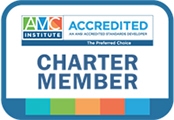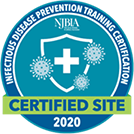Whether it’s a new TV show or mystery novel, I’m a true crime junkie. Some of my favorites include the Harry Bosch novels by Michael Connelly and television shows like CSI and Criminal Minds. The stories follow a similar premise in solving crimes (they always solve the crime by the way) by using a method called criminal profiling.
Criminal profiling is defined as the investigation of a crime with the hope of identifying the responsible party based on crime scene analysis, investigative psychology, and behavioral evidence analysis. The main component of the process involves getting inside the mind of the criminal and having an understanding of why they behave the way they do. During a recent planning session with the American Association of Heart Failure Nurses (AAHFN), I led the Board in applying a similar profiling technique to the membership to help guide the strategic direction for the year.
Prior to the meeting, we analyzed the membership to determine which demographics were most prevalent. For AAHFN, it came down to nurses who practice in either out-patient or in-patient facilities, and the level of experience was split between advanced practice nurses and newer nurses in the field referred to as bedside nurses. We decided to focus on two member profiles: an out-patient advanced practice nurse and an in-patient bedside nurse. AAHFN President Linda Baas also suggested that as an organization focused on patient care, we should include one patient profile for each member as well.
We began the Board’s in-person meeting with the profiling exercise. The Board split into two groups that were tasked with developing full membership profiles of the two made-up nurses. The profiles included typical demographics like age, level of experience, and education, but we also asked them to describe the members’ home lives, typical day at work, and biggest challenge faced in their environment. After we fully developed the member profiles, we moved on to the patient and developed a difficult, typical patient for each. At the end of the exercise, we had developed two distinctly different “members” with different personalities, challenges, and needs.
The final step in the process brought it all together and back to a traditional planning session. The Board looked at the two members and asked themselves how AAHFN could address their challenges and in what ways being an AAHFN member could make their life easier. Answering these questions and developing the profiles yielded several positive results. AAHFN was able to identify several new products and benefits based on the needs of the two largest components of the membership. For the staff who participated, it gave us great insight into the personalities of our members and the daily struggles they face. This perspective was also helpful in developing future branding and communication strategies. Overall, it was a fun experience for both the Board and staff to develop the profilesb and a nice break from the traditional Board meeting.
So just like my favorite true crime stories, AAHFN was able to get into the minds of our members to determine how they will behave, or in our case, what they need, perhaps before they do. We’ll have to wait and see if our investigation will pay off with higher membership satisfaction or new product revenue, but we are certainly one step closer to solving the case.
Pete Pomilio, MBA serves as the executive director for the American Association of Heart Failure Nurses (AAHFN). He has been employed by Association Headquarters as an Executive Director for 8 years. In his role as executive director, Pete works with the AAHFN Board of Directors to oversee all of the business aspects of the association. This includes strategic planning, assisting with decision making, financial planning and forecasting, project management, marketing, industry relations, committee support, and management of daily operations. His previous roles include executive director for the Association for Accounting Marketing (AAM), the Society for Foodservice Management (SFM), and the Wound, Ostomy, and Continence Nurses (WOCN) Society. Pete obtained his Master's in business with a concentration in marketing from Keller Graduate School in 2008, and holds a Bachelor’s degree in psychology from Rutgers University.




